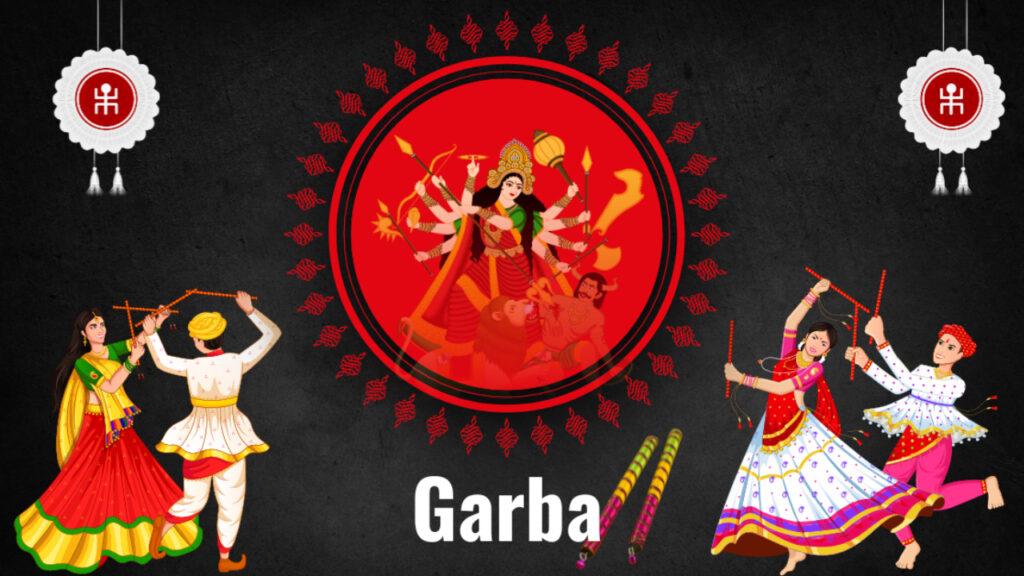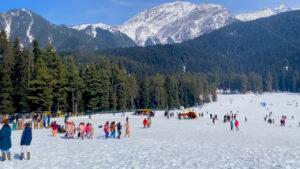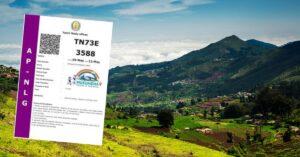Garba is a beautiful celebration of culture, devotion, and community. Vibrant colors and lively music fill the air, take the opportunity to join in the festivities and experience the joy of Garba. Dancing in your local community or participating in large-scale celebrations, Garba offers a unique way to connect with others and celebrate life. Spirit of Garba, and let the music guide you as you dance your heart out this season!
What is Garba?
Garba is a traditional dance that originated in the state of Gujarat and is performed in a circle around a clay lantern or “garba” which symbolizes the goddess Durga. Dance is characterized by its rhythmic clapping, vibrant clothing, and lively music. Traditionally, Garba is performed during the nine nights of Navratri, but it can also be seen at various festivals and celebrations throughout the year.
Dance Movements
Garba involves simple yet energetic movements, making it accessible to everyone, from seasoned dancers to beginners. The dance typically involves clapping and circular movements, where participants sway, twirl, and dance in harmony. The vibrant rhythm is often accompanied by traditional instruments such as dandiya sticks, drums, and harmoniums, enhancing the overall experience.
Music
Garba music is essential to the dance. It features folk songs that celebrate the goddess Durga, love, and life, often sung in Gujarati. The upbeat tempo and catchy melodies encourage participants to immerse themselves in the dance, creating a festive atmosphere that is hard to resist.
Why is Garba Celebrated?
Garba is celebrated for several reasons, ranging from cultural heritage to religious significance. Key reasons why Garba holds a special place in the hearts of many.
1. Celebration of the Divine Feminine
Garba is intrinsically linked to the worship of the goddess Durga, who represents strength, power, and femininity. Nine nights of Navratri are dedicated to honoring different forms of the goddess, and Garba serves as a way to express devotion and seek blessings. Each night of Navratri is associated with a specific avatar of Durga, and Garba acts as a spiritual offering to the divine.
2. Cultural Heritage
Garba is a reflection of Gujarat’s rich cultural heritage. Dance has been passed down through generations, and its significance extends beyond just entertainment. It serves as a medium for storytelling, preserving folklore, and promoting the traditions of the region. Participating in Garba allows individuals to connect with their roots and celebrate their heritage.
3. Community Bonding
Garba fosters a sense of community and togetherness. People from different backgrounds come together to participate in the dance, creating an atmosphere of inclusivity and camaraderie. It’s not just about dancing; it’s about forging connections and building friendships that often last beyond the festival season.
4. Joy and Celebration
Garba is a celebration of life and joy. The infectious energy of the dance, coupled with the lively music, creates a festive atmosphere that encourages participants to let loose and enjoy themselves. It’s a time for laughter, happiness, and celebration, providing a much-needed respite from the stresses of daily life.
When is Garba Celebrated?
Garba is primarily celebrated during the nine nights of Navratri, which typically falls in September or October, depending on the lunar calendar. Festival lasts for nine nights and ten days, culminating in Dussehra, which celebrates the victory of good over evil.
Nine Nights of Navratri
Each night of Navratri is dedicated to a different form of the goddess, and the celebrations vary slightly from region to region. Nine forms of Durga celebrated during Navratri are:
- Shailaputri (1st Night): Represents the power of will and determination.
- Brahmacharini (2nd Night): Symbolizes knowledge and wisdom.
- Chandraghanta (3rd Night): Embodies strength and courage.
- Kushmanda (4th Night): Represents creativity and growth.
- Skandamata (5th Night): Symbolizes the nurturing aspect of motherhood.
- Katyayani (6th Night): Embodies warrior energy and protection.
- Kalaratri (7th Night): Represents the fierce and protective nature of the goddess.
- Mahagauri (8th Night): Symbolizes purity and serenity.
- Siddhidatri (9th Night): Represents accomplishment and success.
Garba nights typically begin after sunset and continue late into the night, with participants often dressing in traditional attire, such as colorful chaniya cholis for women and kurtas or dhotis for men.
Where to Dance Garba This Season
Garba celebrations take place in various venues, from homes and community centers to large open spaces. Best places to experience Garba this season:
1. Local Temples and Community Centers
Many local temples and community organizations host Garba events during Navratri. These gatherings often feature traditional music, dance, and food, creating an authentic atmosphere for participants. Check with your local Hindu temple or cultural organization for schedules and details.
2. Garba Festivals
Several cities across India and abroad organize large-scale Garba festivals that attract thousands of participants. Some popular cities for Garba celebrations include:
- Ahmedabad: Known as the epicenter of Garba, Ahmedabad hosts grand events in various venues, including the famous Sabarmati Riverfront and Sardar Patel Stadium.
- Vadodara: City boasts lively Garba events, with many public and private celebrations taking place.
- Surat: Known for its vibrant cultural scene, Surat hosts numerous Garba functions, showcasing local talent and folk music.
- Mumbai: City hosts several Garba nights in parks, community halls, and even large auditoriums. Many clubs and societies also organize private Garba parties.
- Pune: With a growing Gujarati community, Pune has seen an increase in Garba events, often featuring renowned artists and musicians.
3. Garba Competitions
In addition to regular dance nights, many communities organize Garba competitions, where participants showcase their skills and creativity. These events can be highly entertaining, drawing large crowds and adding an element of friendly competition to the festivities.
4. Online Garba Events
With the rise of virtual celebrations, many communities have also embraced online Garba events. These virtual gatherings allow participants from around the world to join in the festivities, making it accessible for those who may not be able to attend in person. Check social media platforms and community websites for information on upcoming online Garba events.
How to Prepare for Garba?
If you’re planning to participate in Garba this season, here are some tips to ensure you have an enjoyable experience:
1. Learn the Steps
While Garba is relatively easy to learn, familiarizing yourself with the basic steps can enhance your experience. You can find numerous online tutorials or attend local workshops to get a feel for the dance. Watching experienced dancers can also provide inspiration and help you pick up the rhythm.
2. Dress Appropriately
Traditional attire adds to the festive spirit of Garba. Women often wear colorful chaniya cholis, while men typically opt for kurtas or dhotis. The brighter the colors, the better! Accessories like bangles and bindis enhance the overall look. Make sure to wear comfortable footwear, as you’ll be dancing for extended periods.
3. Stay Hydrated and Energized
Garba can be physically demanding, so it’s important to stay hydrated. Drink plenty of water before and during the event. Additionally, having light snacks beforehand can provide the energy you need to keep dancing all night long.
4. Be Open to New Experiences
Garba is about community and connection, so don’t hesitate to join in even if you’re unfamiliar with the dance. Be open to meeting new people and making friends. The more you engage, the more enjoyable the experience will be.
Garba is more than just a dance; it’s a vibrant cultural expression rooted in the traditions of Gujarat, India. Festive dance form is celebrated with great enthusiasm and joy, particularly during the Navratri festival, which honors the divine feminine.
Garba brings people together, transcending age, gender, and social barriers, and creates a sense of community and belonging. In this article, we’ll delve into what Garba is, why it holds a special place in Indian culture, when it is celebrated, and where you can join in the festivities this season.




